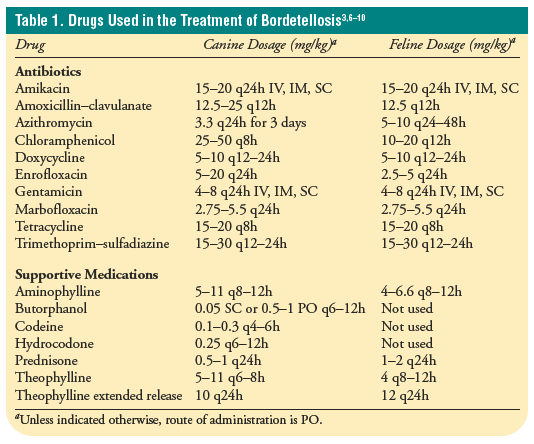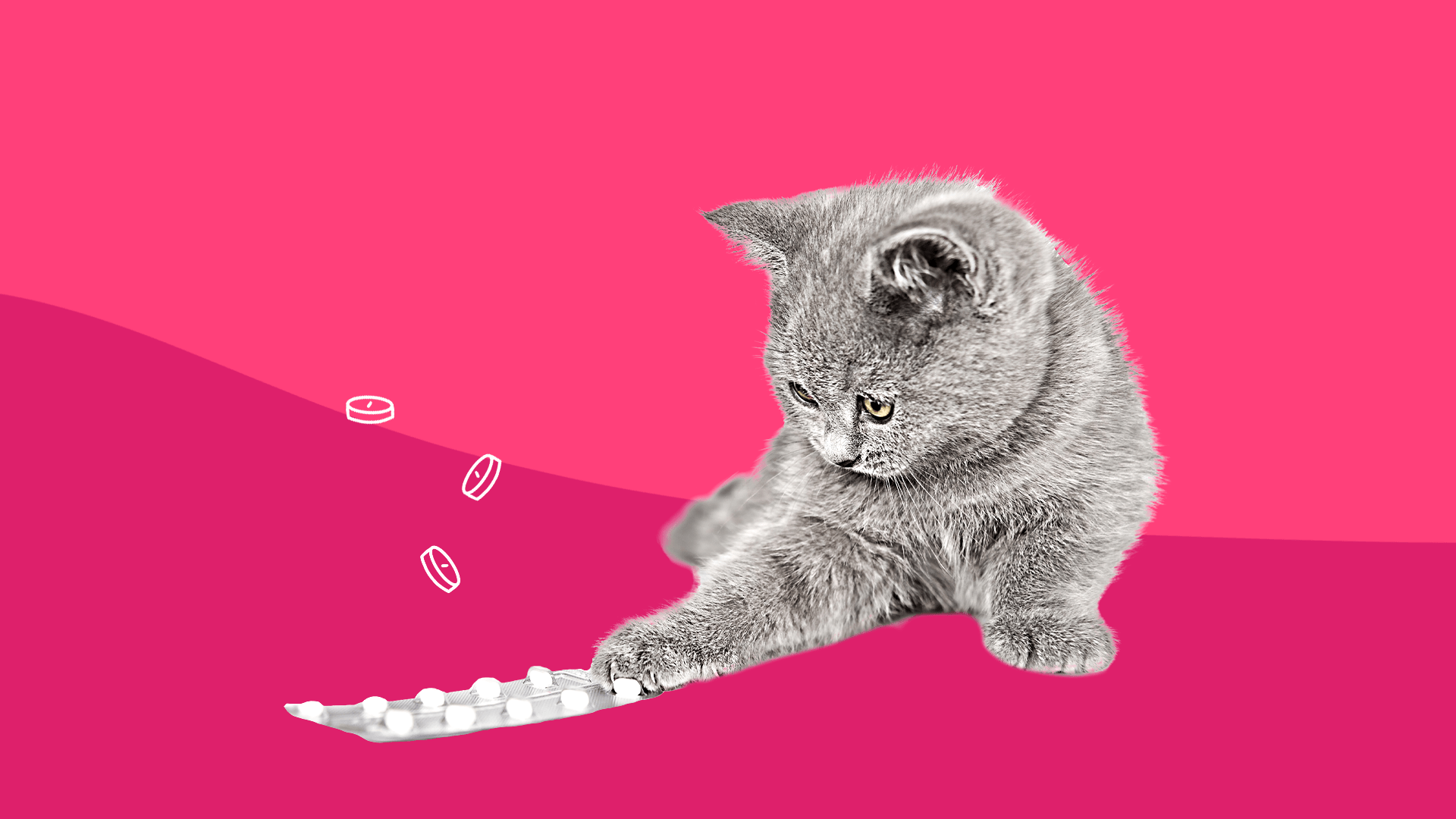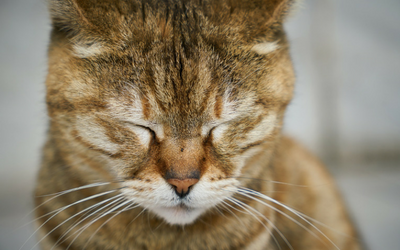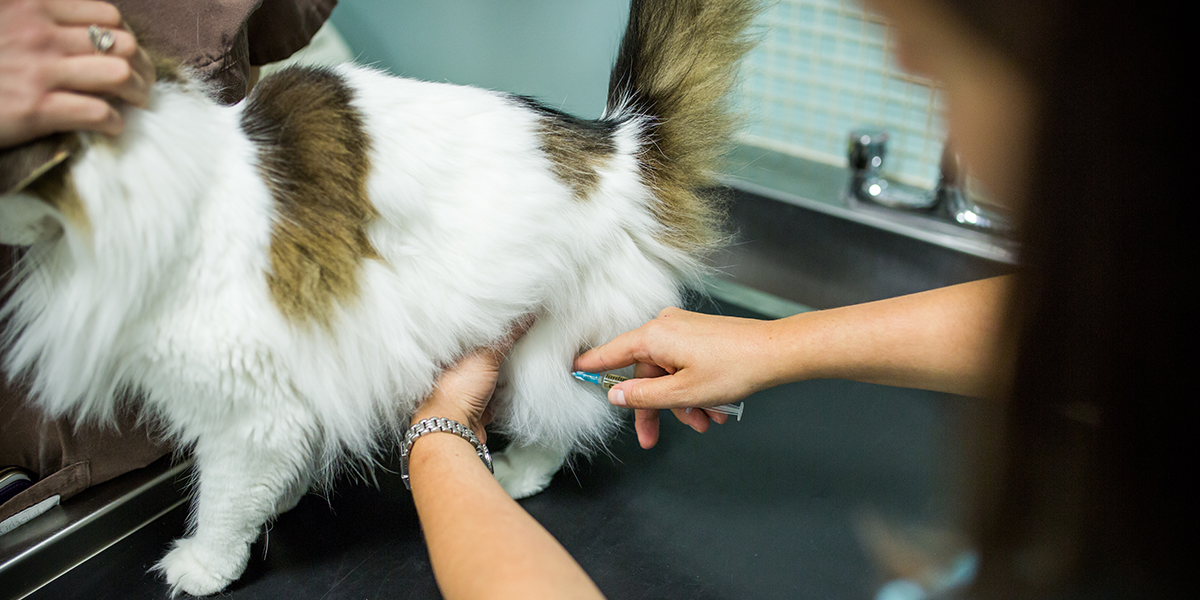Descriptive epidemiology of feline upper respiratory tract disease in an animal shelter J Feline Med Surg. Its use to treat certain infections such as toxoplasmosis is off label or extra.

Use Of Antibiotics For Treating Utis In Dogs And Cats Today S Veterinary Practice
For cats the typical dose is 5 to 10 mg per pound every 24 hours.

. Medication should never be administered without first consulting your veterinarian. Route frequency side effects Less ideal given correctly is better than ideal given Above all do no harm One cat one set of drugs. Clavamox works by binding directly to certain enzymes located in the cell membrane of susceptible bacteria.
5 mgkg PO every 12 hours or 10 mgkg PO every 24 hours. Clindamycin brand names Antirobe Cleocin ClinDrops Clintabs is an antibiotic used to treat a range of bacterial infections in dogs and cats. Feline acute bacterial upper respiratory.
Specifically clindamycin inhibits anaerobic bacteria from producing certain proteins that they need to survive and grow which slows bacterial growth giving the cats immune system time to absorb and destroy the bacteria themselves. Feline upper respiratory tract disease is a syndrome. 10 ml once a day.
If corneal ulcers are present herpesvirus 1 is most likely. Clindamycin is available in 25 mg 75 mg and 150 mg capsules and a 25 mgml oral suspension. Trying Chewy Pharmacy is Easy.
As a rule of thumb a sniffly kitty that is still eating active and feeling fine can be watched for a few days. As a bactericidal antibiotic the role of Clavamox is to kill bacteria that are susceptible to it. Herpesvirus 1 rhinotracheitis.
The manufacturer recommends a course of 3-5 days treatment for an upper respiratory infection in cats. The typical upper respiratory infection involves the nose and throat causing symptoms such as sneezing nasal congestion conjunctivitis inflammation of the membranes lining the eyelids and discharge from the nose or eyes. It is often used to treat wounds pyoderma abscesses bone and dental infections and toxoplasmosis.
5 mgkg PO every 12 hours or 10 mgkg PO every 24 hours. Doxycycline and metronidazole may be superior to other drugs for. Like most antibiotics clindamycin may.
Clindamycin clavamox azithromycin If antibiotic response continue 8 WEEKS. In uncommon cases clindamycin can cause diarrhea in cats. Lappin DVM PhD DACVIM.
He also has - Answered by a verified Cat Vet. Of actively replicating parasites decreased IgM titer development or decreased phagocytic activity caused by the drug. The usual dose for cats is 5-10mgpound every 24 hours.
However it is important. And the drug can be used once daily for bacterial infections in cats. The usual dose of Clindamycin for dogs is 25mg-5mgpound every 12 hours.
Amoxicillin clavamox metronidazole and clindamycin are good first choices. It would seem that the average house cat would be at low risk for infection. The typical dose of clindamycin for dogs is 25 to 5 mg per pound every twelve hours.
Clindamycin has the advantage of effective against Mycoplasma spp. Feline Viral Upper Respiratory Diseases. FHV-1 and calicivirus FCV are the most common viral causes of sneezing and nasal discharge in the cat.
For urinary tract infections in dogs it recommends a 7-21 day course of treatment. In kitty cats it is most often used for upper respiratory infections urinary tract infections and soft tissue infections complicating a bite wound or injury. Oral clindamycin can cause anorexia vomiting and diarrhea in dogs and cats especially at higher dosages.
Clindamycin is used to treat a variety of infections in dogs and cats. Oral amoxicillin like many broad-spectrum antibiotics can alter the normal beneficial bacteria in the digestive tract which is often a cause of digestive upset if it occurs. The agents of feline upper respiratory infection are highly contagious and present where ever cats live in groups.
Clindamycin is notorious for tasting awful so it may be better to give it in a gelcap. Up to 25 cash back My cat has an upper respatory infection and is on clindamycin Hydrochloride drops. 22 mgkg PO every 12 hours.
Clindamycin has the advantage of effective against Mycoplasma spp. However more severe infections may require treatment prescription pet medication or even hospitalization. First-line drug options.
Getting infected is easy. Update on feline upper respiratory diseases. If oral ulcers are present calicivirus is most likely.
Side effects of amoxicillin in cats are typically mild and infrequent but when they do occur most often include digestive upset like vomiting diarrhea and a decrease in appetite. Add your Vet and Pet Rx info then Chewy Handles the rest. Clindamycin has a very bitter taste so you may need to disguise the medication in food in order for your pet to take it.
Our first vet treated her with prednislone and an antibotic from 704-606. FHV-1 has now also been associated with chronic stomatitis facial dermatitis and endogenous uveitis. Parenteral administration of a fluoroquinolone d and a penicillin or clindamycin e initiallyBase oral drug choices to follow.
Feline chronic bacterial URI. We concluded in the manuscript that pradofloxacin can be a safe efficacious therapy for. A cat simply must socialize with an infected cat or share the same human caretaker toys or food bowls.
Clavamox has the advantage of killing most Bordetella isoloates. The usual dose of clindamycin in dogs is 5 mg per pound 11 mgkg every 12 hours or 10 mg per pound 22 mgkg. If there is blood in your cats.
Dosing Information of Clindamycin for Dogs and Cats. Long-course high-dose antibiotics eg clindamycin 5075 mgcat PO Q 12 H for 34 months may be used to manage chronic snufflers. My cat has had a respiratory problem for the past 2 12 years.
5 mgkg dose in dogs because of likely induction of resistant strains and 1 Working Group member does not recommend the drug for cats because the 5 mgkg dose. Drug toxicity was not noted and all cats were reported to tolerate the administration of the drug. Easy Refills with Autoship.
Most upper respiratory infections in cats will resolve themselves with a little extra TLC and time. Its indications in dogs include Staph pyoderma wounds abscesses dental infections osteomyelitis susceptible hepatobiliary or respiratory infections anaerobic infections intra-abdominal sepsis actinomycosis some methicillin resistant Staph infections and susceptible. Consequently how long does clindamycin take to work in cats.
Always defer to a veterinarian about how to give clindamycin to a dog or cat. Feline upper respiratory infections. Discharge may be clear or may become purulent cloudy in appearance and containing pus.
These side effects appear to be related to.

L Lysine For Cats Great Pet Care

What Are The Best Practices For Antibiotic Use In Feline Upper Respiratory Tract Disease

Clindamycin For Dogs And Cats Dosage Side Effects Drug Genius

Respiratory Therapeutics Veterian Key

Clindamycin Antirobe Cleocin For Dogs And Cats

Learn Now With This Article On Infectious Disease By Dr Craig Datz

Antibiotic Stewardship In Canine And Feline Respiratory Infections Today S Veterinary Practice

16 Pet Antibiotics When Does Your Pet Need Antibiotics

Amoxicillin For Cats Uses Dosage Side Effects Amoxicillin For Cats Cats Pet News

Famciclovir For Cats Uses Dosage Side Effects Cats Cat Facts Pregnant Cat

Clindamycin Hcl Antibiotic Capsules 75mg Petcarerx

Clindamycin For Cats Uses Dosage Side Effects Cattime

Sniffly Sneezy Snuffler Cats Grand Avenue Veterinary Center

Meningitis In Cats Vca Animal Hospitals

Is It Safe To Give Cats Human Antibiotics Lovetoknow

Can Cats Have Benadryl We Explore The Side Effects Dosage And Alternatives Relievet

Vaccinating Your Cat International Cat Care

Clindamycin For Cats Uses Dosage Side Effects Cattime

Feline Rhinitis And Upper Respiratory Disease Today S Veterinary Practice
